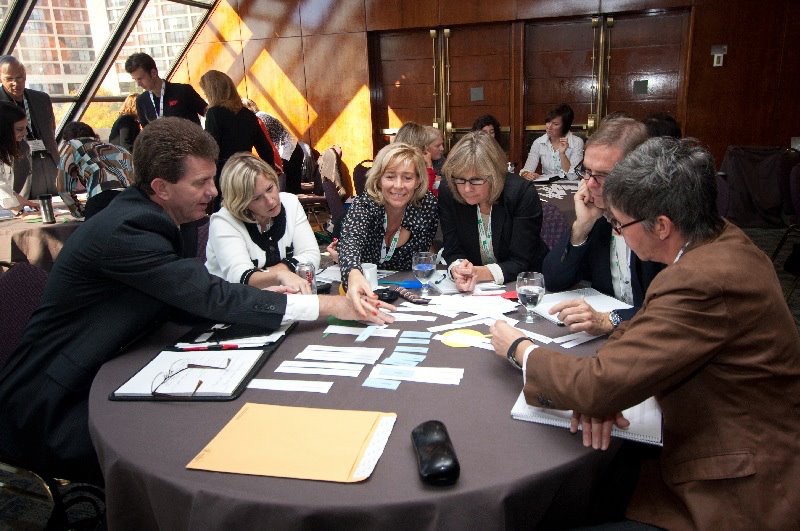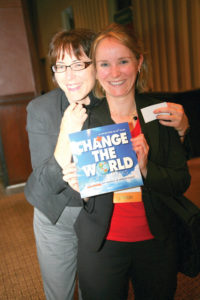
28 Jun Expert Advice on Creating a Positive People Culture
“A positive people culture is one where people experience positive emotions, optimism, cohesion, gratitude and humour, and where they have, as a consequence, a real sense of engagement”
Dr. Michael West, Professor of Organizational Psychology,
Lancaster University Management School.
My interview with Dr. West was one in a series of interviews conducted for my upcoming book, “A Better Place to Work: Daily Practices That Transform Culture.”
He is Europe’s leading expert on healthcare leadership and its impact on financial sustainability. He conducts research on team and organizational innovation, and teaches solutions for developing effective and innovative organizations.
Dr. West and others from the University set up a company back in 2003 called AstonOD with the sole purpose being to develop more positive and resilient teams in healthcare.
Their work over the years with the National Health Service in the UK has shown overwhelming evidence that not only can we increase positivity and resilience in teams and organizations, but that
“the more positive the culture in the organization, the better it will perform, the more satisfied the patients are, the higher the quality of care and the better the financial performance.”
What is most remarkable, he says, is that it is so much easier to manage that way than any other way. Here is an excerpt from the interview:
Deb: What practices have you used to increase positivity and resilience in teams?
Dr. West:
“In particular we focused on developing the skills of coaching teams within these organizations to create positivity and resilience. This meant making sure that teams have clear, inspiring purpose, clear objectives and clear roles. Making sure they meet regularly and that meetings are positive.
We taught leaders how to listen to all the diverse voices and to create shared leadership, and in particular how to work across team boundaries, so that different teams work together effectively.
We’ve seen astonishing results in terms of care-quality, patient satisfaction and staff well-being. What we’ve found is that a 5% increase in staff working in positive, resilient teams is associated with a 3.3% decline in patient mortality. For the average hospital that is a reduction of 40 deaths per year.
If we can decrease the number of health service staff working in negative and non-resilient teams by 25%, a conservative estimate is that 5000 people’s lives would be saved across the UK each year.
What we know is that the more people who are working in positive, resilient teams, the lower the levels of errors, stress, injury and patient mortality in hospitals.”
Dr. West has been a part of an extensive review of all of the literature on climate and culture over the last 40-50 years, which has shown, not surprisingly, that one of the most significant influences on culture in the workplace is leadership.
Part of this is developing compassionate leadership.
As Dr. West says,
“The point of the concept of compassion is that it’s not a touchy, feely concept. It’s a very practical concept.
It’s about attending to the other, which means paying attention to one another, listening with fascination to each other, understanding what they think their challenge is, empathizing and then taking intelligent and supportive action to help each other.”
 Deb: What is your recommendation for anyone wanting to shift culture from within an organization? Do you think change has to start at the top?
Deb: What is your recommendation for anyone wanting to shift culture from within an organization? Do you think change has to start at the top?
Dr. West:
“I don’t think it has to start at the top. It’s much easier if it does. But my recommendation is ‘don’t try to do it by yourself’. The defense mechanisms in organizations are likely to ensure that you are chewed up and spat out.
There’s a really fascinating area of social psychology called minority influence theory. It is based on how minorities bring about change, and suggests that you need to form a small group of committed people who share your vision.
You need to articulate a small number of really clear messages about the kind of culture you want to achieve and the changes that you want to make. And then repeat, repeat, repeat those messages in any forum or through any media that you can.
Be sure to listen carefully to what people’s responses are, but commit to repeating the messages. Over time, the evidence shows that this causes people to think more creatively about the issues.
You can take the examples of groups that existed in the seventies and eighties, like the feminists – and how they have changed the way that we think because they had a vision and they were cohesive. And they talked about these consistent messages coherently, repeatedly and bravely.
I think this is a really powerful strategy for bringing about change. It is clear that people who try as individuals to bring about change and don’t form such a small group, on the whole either get exhausted or spat out by the organization.
They have to model the behaviours they want others to incorporate. And I believe more and more profoundly, if we want to bring about change we have to practice compassion.
We have to listen with fascination to the other, understand their situation, empathize and ask the question “How can I help you?”
The full interview with Dr. Michael West will be available when the book is released this fall.
The interviews with other organizational health thought-leaders interviews will be posted on this blog as they are available throughout the summer


